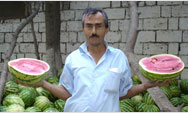 |
 |
 |
|||||||||||||||||||||||
Introduction During the final days of 1989, Romanians overthrew the brutal, communist dictatorship of Nicolae Ceausescu and began the journey to becoming a free market-oriented democracy, participating fully in a prosperous Europe. They did not have the institutions or the resources to make an easy transition. Nearly fifty years of communism had virtually eliminated the free market, competitive political processes and civil society. Romania lacked the laws, regulations, regulatory agencies, a stock market, commercial banks and many other requirements of a free market economy. State companies dominated the economy. There were no large private businesses to support a free market. Many of the organizations that sustain a democracy were absent. The government had been in the hands of one party for two generations, there were no viable opposition political parties. Civil society did not exist and people were very suspicious of each other and very reluctant to form groups to work for their common interests. In 1990, Romania began to build a democratic society and free market economy, with many countries, including the United States, ready to help. In response to the collapse of communism in Eastern Europe, the Congress of the United States passed the Support for East European Democracy (SEED) Act in January 1989, to provide funds and assistance to countries emerging from communism. The principal objectives of the Act were to "… contribute to the development of democratic institutions and political pluralism. " and "… promote the development of a free market economic system …" (SEED Act Section 2 (b)). Between 1990 and 2006, the American people provided US$562 million for bilateral development assistance, averaging US$33 million each year*. Initially, the funds were used primarily for emergency food supplies and the rehabilitation of the economy that collapsed immediately after the revolution. Since 1993, Romanians have used the U.S. assistance to implement ambitious economic, democratic and social programs to accelerate the country’s transition to a democratic, market based economy and to improve the quality of life of all Romanians. On January 1 2007, Romania became a member of the European Union, ready to participate fully in its democratic, free market institutions. U.S. bilateral development assistance will be completed during 2007. This book records the legacy of the cooperation between Romanians and Americans over the past 17 years. It is not a detailed inventory of all the jointly implemented programs. It puts a human face on the legacy by highlighting the achievements of some of the Romanians who participated in the multitude of partnerships that implemented the programs. The book has five chapters. The first four describe partnerships that stimulated economic growth, improved governance and democracy, enhanced child welfare and women's health, and responded to to and prepared for disasters. In the final chapter, U.S. Ambassador Nicholas Taubman shares his view of the Romanian-American partnership and how it may evolve in the future. The annex lists the principal implementing partners in all the Romanian-American development partnerships. |
|||||||||||||||||||||||||
|
